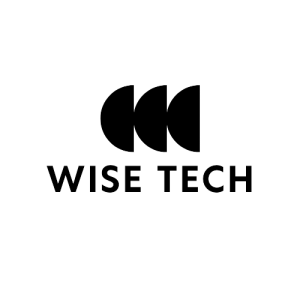Understanding the Role of Cold Calling in Modern Sales
Cold calling has remained one of the most reliable ways to connect directly with potential clients, even in today’s digital-driven sales environment. While social media and email campaigns dominate marketing discussions, the personal connection built through a phone conversation often leads to higher conversion rates. Cold calling appointment setting training helps sales professionals refine the skills needed to turn cold contacts into warm, qualified leads ready to buy or engage. What sets appointment setting apart is its precision—it’s not about selling on the spot but securing the next step in the sales funnel. When done effectively, cold calling builds trust, positions your business as a problem-solver, and keeps your sales pipeline healthy. Many professionals underestimate the strategy behind each call, but structured training transforms random dialing into purposeful communication. By understanding how cold calling fits within a modern sales framework, appointment setters can focus on creating value in every interaction rather than merely chasing numbers.
The Psychology Behind Cold Calling Success
Every successful cold caller knows that psychology plays a major role in influencing decisions. Before even picking up the phone, mindset and preparation dictate performance. Training programs teach professionals how to build resilience, manage stress, and approach each call with genuine confidence. Understanding how people think and make decisions helps create conversations that resonate emotionally. The right tone, pace, and language can make the difference between being ignored and earning an appointment. Voice modulation, for instance, builds credibility and authority, while empathy helps establish rapport. When salespeople learn how to listen beyond words and identify emotional cues, they can tailor their pitch effectively. Cold calling appointment setting training focuses on teaching how to turn conversations into collaborations, where both sides feel valued and understood. This psychological awareness helps callers connect faster and maintain control of the conversation without sounding forceful or robotic.
Essential Components of Effective Cold Calling Appointment Setting Training
Comprehensive cold calling appointment setting training combines soft skills, technical proficiency, and proven communication methods. Trainees are guided through the key stages of a successful call—from opening to follow-up—using frameworks that improve clarity and confidence. Programs typically emphasize the “Four P’s”: preparation, personalization, presentation, and persistence. These principles ensure each call has structure, purpose, and authenticity. Participants also learn active listening, objection handling, and lead qualification techniques to refine their approach. Effective training includes mock calls, recorded feedback sessions, and real-time assessments that help identify improvement areas.
Core elements often covered include:
- Crafting and customizing call scripts that align with brand voice
- Practicing objection management through live role-play
- Understanding body language and vocal tone
- Using CRM tools to track performance metrics
- Scheduling and confirming appointments effectively
Each module builds a complete foundation that turns uncertainty into confidence. By combining practice with strategic learning, professionals can transform hesitation into high-impact performance.
Developing a Winning Cold Call Script That Converts
A script is the backbone of every cold call, but the art lies in how it’s used. Cold calling appointment setting training teaches that scripts are guides, not word-for-word speeches. The best scripts sound conversational, adaptable, and authentic. They follow a logical structure—capturing attention, identifying needs, presenting value, and securing the next step. Personalization is crucial, as no two prospects are the same. Training helps callers research prospects effectively and use data-driven insights to tailor their pitch. Strong openings can instantly build interest, while effective transitions keep prospects engaged. For instance, instead of starting with a pitch, open with curiosity: “I noticed your company recently expanded into new markets—how are you managing client outreach during that growth?”
A great script focuses on:
- A strong, attention-grabbing introduction
- Asking open-ended questions that reveal pain points
- Offering relevant solutions without overselling
- Ending with a clear and confident appointment request
When scripts are refined through training and practice, they become natural tools for communication, allowing callers to sound both professional and approachable.
Mastering Objection Handling in Appointment Setting
Objections are not roadblocks—they are opportunities to build credibility. Training equips sales professionals to understand the psychology behind objections and respond strategically instead of defensively. Common objections like “I’m not interested” or “I don’t have time” often stem from lack of trust or understanding. Instead of reacting, trained callers learn to pause, empathize, and redirect. A well-structured response acknowledges the concern while guiding the prospect back to the value proposition. For example, saying, “I completely understand—you’re probably busy, which is exactly why I’d like to set a quick call to save you time down the line,” reframes the objection positively.
Key objection-handling principles include:
- Listening fully before responding
- Validating the prospect’s concern
- Using curiosity to probe deeper
- Redirecting focus toward benefits
- Maintaining calm and professionalism
Through training, professionals develop composure and agility, enabling them to turn resistance into opportunity. Each objection becomes a step toward building stronger engagement and trust.
Leveraging Technology to Improve Cold Calling Performance
Modern cold calling appointment setting training integrates technology to make calling more efficient and data-driven. Sales teams now rely on CRM systems to organize leads, track conversations, and analyze performance metrics. Tools like call tracking software, automation platforms, and AI analytics streamline repetitive tasks, allowing callers to focus on quality interactions. Training programs teach participants how to interpret data and use it to refine call timing, messaging, and follow-ups.
Technology-driven benefits include:
- Automated dialing to increase call volume
- Real-time analytics for conversion tracking
- Call recording for performance review
- AI-based voice analysis for tone and clarity improvement
By mastering these tools, appointment setters can combine human connection with digital precision. The result is a scalable, repeatable process that enhances productivity and conversion rates while maintaining authenticity.
Training Techniques That Build Long-Term Success
Skill development in cold calling doesn’t happen overnight. Consistent training and reinforcement are vital to achieving mastery. Programs that emphasize interactive learning—like role-playing, feedback loops, and performance tracking—produce measurable improvement. Regular one-on-one coaching allows trainers to pinpoint weaknesses and turn them into strengths. Group workshops foster peer learning and competitive energy, motivating participants to improve through collaboration.
To maintain growth, professionals are encouraged to set personal goals and monitor progress through metrics such as calls made, appointments set, and conversion percentages. Continuous education ensures that appointment setters stay updated with market trends, new objection patterns, and communication techniques. The goal is to create adaptable, confident, and highly skilled professionals who can deliver consistent results in any industry.
Metrics That Define a Successful Cold Calling Appointment Setter
Numbers tell a story, and understanding those numbers is critical in cold calling appointment setting training. Key performance indicators (KPIs) give clarity on what’s working and where improvement is needed. These include metrics like call-to-appointment ratio, average call duration, and follow-up success rate. Tracking both quantity and quality ensures that efforts lead to meaningful results rather than empty activity.
Important KPIs to monitor:
- Number of calls made per day
- Appointment conversion rate
- Lead response time
- Percentage of follow-up success
- Customer feedback scores
Interpreting these results helps fine-tune strategy and build realistic goals. When professionals learn to analyze and act on performance data, they gain control over outcomes and continuously improve their success rate.
Common Mistakes to Avoid During Cold Calling Appointment Setting
Even skilled callers can fall into habits that limit effectiveness. Training helps identify and correct these early. Common errors include relying too heavily on scripts, skipping research, or ignoring follow-up opportunities. Poor timing and lack of personalization also lead to missed appointments. Another frequent mistake is failing to record call details, which makes it hard to track progress or improve future conversations.
To avoid setbacks, always:
- Personalize each conversation based on prospect research
- Listen more than you talk
- Be persistent but respectful
- Schedule prompt follow-ups
- Track every call and outcome in your CRM
Avoiding these pitfalls ensures professionalism and builds a strong reputation with potential clients.
Building Confidence and Mindset for Cold Calling Success
Confidence is the lifeblood of successful cold calling. Without it, even the best scripts and tools won’t deliver results. Training helps participants strengthen their mental resilience through practical exercises, mindset conditioning, and motivational techniques. Overcoming fear of rejection begins with preparation and perspective—understanding that “no” is part of the process, not a personal failure.
Callers are taught to celebrate small wins and view each conversation as an opportunity to learn. Positive affirmations, visualization, and breathing techniques are often included in advanced training programs to maintain composure during long calling sessions. The right mindset transforms cold calling from a stressful task into a fulfilling skill that builds both character and career success.
Frequently Asked Questions (FAQ)
What makes cold calling appointment setting training essential for sales professionals?
It equips salespeople with communication, strategy, and psychological tools to convert cold leads into qualified appointments consistently.
How long does it take to become proficient in appointment setting through cold calling?
With consistent practice and guided training, most professionals see significant improvement within 4 to 8 weeks.
Can beginners without sales experience succeed in cold calling training programs?
Yes. Training programs are structured to build confidence and skills even for complete beginners.
What are the most effective tools used during cold calling appointment setting training?
CRM platforms, AI call analysis tools, and automated dialing systems enhance organization and performance tracking.
How does cold calling appointment setting training differ for B2B and B2C sales teams?
B2B calls focus more on value propositions and scheduling meetings, while B2C calls emphasize emotional appeal and direct conversion.
Takeaway
Cold calling appointment setting training transforms raw communication into measurable success. It builds confidence, structure, and strategy—turning hesitation into opportunity. With the right mindset, technology, and continuous learning, every call can become a step closer to a qualified appointment and long-term business growth.













